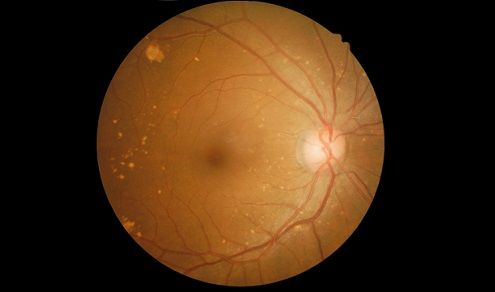Short-Term Effects of Ranibizumab Biosimilar Compared to Ranibizumab for DME
A study presented at ASRS 2019 found that the ranibizumab biosimilar (razumab) was noninferior to ranibizumab after 1 month of treatment.

With fixed incomes a reality for many elderly patients, finding less expensive alternatives to current therapies is a hot topic for many retina specialists.
Despite only being approved in India, the ranibizumab-biosimilar (Razumab) has caught the attention of many at the 2019 American Society of Retina Specialists Annual Meeting seeking an alternative treatment for patients with diabetic macular edema (DME). 

Sudipta Das, MD, an ophthalmologist at Sankara Nethralaya, presented a study he led at ASRS 2019 that compared the short term impact of intravitreal ranibizumab and ranibizumab on vision and central foveal thickness (CFT) in treatment-naïve patients. Results of the study revealed that both ranibizumab and ranibizumab biosimilar were safe and showed significant reductions in CFT among patients.
The retrospective, non-randomized, non-masked, consecutive case series included a total of 73 eyes from 66 patients — 32 patients were included in the ranibizumab biosimilar group and 34 were included in the ranibizumab arm.
The mean age of the ranibizumab biosimilar group 58.1 years and 23 (71%) were male. There were 20 eyes with DME and 15 eyes with macular edema in veinous occlusion group. 

The ranibizumab group had a mean age of 58.5 years and 22 (64%) were males. The group had 20 eyes with DME and 18 eyes with macular edema in veinous occlusion group.
After 1 month, investigators found that the average best-corrected visual acuity (BCVA) improved by 48.5% of eyes and CFT improved in 85.7% in the ranibizumab biosimilar group. Mean intraocular pressure change among these patients was from 14.4 to 14.7 mm of Hg (p=0.37).


Among patients in the ranibizumab group, the average BCVA improved in 55.2% and CFT improved in 86.8% after 1 month. Investigators noted the mean IOP change was from 14.03 to 14.8 (p=.01). Additionally, investigators noted no instances of postoperative inflammation in any of the groups at 1 month.
In an interview with MD Magazine® at ASRS 2019, Das relayed that he was not surprised by the results of the study and he believes an ongoing 6-month study examining the same effects will provide similar results.
“I feel like these (results) are not surprising. We are still waiting for results of the prospective studies but we feel it will show it is not inferior to ranibizumab,” Das said.
This study, titled “Comparing Short-Term Effects and Safety of Ranibizumab Biosimilar and Ranibizumab on Vision and Central Foveal Thickness in Treatment Naïve Patients,” was presented at ASRS 2019.